These days, just about everyone is on social media, from casual gaming grandmas to foodies documenting their dining. For small businesses, that means you’ve got a direct line to a huge group of potential customers. All you have to do is give them an easy way to find you—by adding social media on your business cards.
Business cards are essential for a good first impression (imagine hand-writing your information for each new client instead of sharing a professionally designed business card!). And with over four billion social media users worldwide, including social media icons on business cards is a low-effort, high-reward way to let people know where to connect with you in real time.
With that in mind, let’s go over four simple steps to add social media icons to business card designs.
Jump to:
How to add social media icons on your business card in 4 steps
- Find and download the best social media icons for business cards
- Cross-check correct icon usage with official style guides
- Figure out the best placement of social media icons
- Add a call-to-action (optional)
How social media can help your business
- It can make your brand memorable
- It can increase your following and customer base
- It enriches customer relationships
- It can easily create a buzz
How to add social media icons on business cards
Although social media icons are third-party images (in other words, they are copyrighted images from an outside brand), you can definitely use social media icons on your own business card. Social media companies make allowances for their logo icons to be used on business cards, provided you are using the correct version of the icon and are following the brand’s guidelines.
Below are four easy steps to finding and adding social media icons to your business card.
Step 1: Find and download the best social media icons for business cards
When looking for social media icons to use, your first instinct may be to scour Google. But with thousands of results, you’ll have to filter through a ton of unusable icons to find what you need. In terms of image file formats, you’ll need an icon with a transparent background (PNG, EPS, etc.), a vector file (preferably) or a raster file in a large enough size (minimum 300dpi) to avoid pixelation and a color scheme that matches the scheme of your business card.
Google is also full of watermarked images from third-party websites or social media icons custom-designed by other designers—either of which can land your business in hot water for copyright theft.
Tip
If you’re keen to take a DIY approach and create your business cards from scratch using advanced tools like Adobe Illustrator, make sure the social media icons you use are vector files for easy customization.
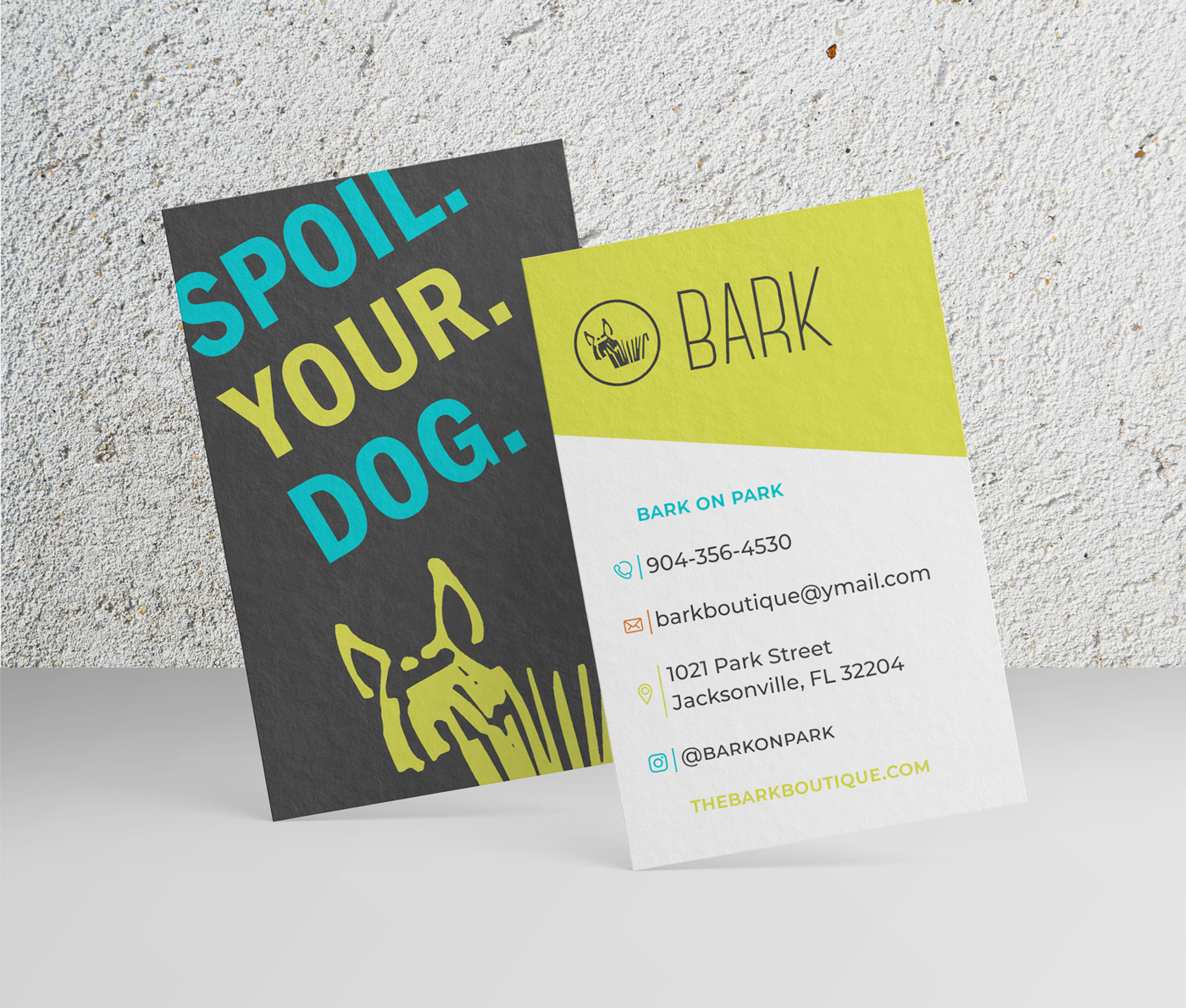
Source: business card design by HYPdesign via 99designs by Vista.
Alternatively, you could source social media icons from websites like ICONFINDER, Freepik and Brandfetch as well. However, some customized assets need proper attribution to use for free—which is not very practical if you have a small space to work with—or have to be purchased for a fee.
So what’s your best option on where to find social media icons for business cards? Download the official social media icons or logo packs directly from the company’s website. They’re free to use, come in different formats and do not breach copyright. Here are some links for the most commonly used social media icons for business cards:
- Facebook logo for business cards
- X (formerly Twitter) logo for business cards
- Instagram logo for business cards
- TikTok logo for business cards
- YouTube logo for business cards
- Pinterest logo for business cards
Step 2: Cross-check social media icon usage with official style guides
While you have free reign in the overall look of your business card, you may want to avoid modifying social media icons too substantially. Social media giants like Facebook, Instagram, and TikTok have official style guides to protect their brands. Style guides provide examples of how to use brand assets without sacrificing aesthetics and functionality as well. Generally, you can’t deviate from the official icon shape or logo font style.
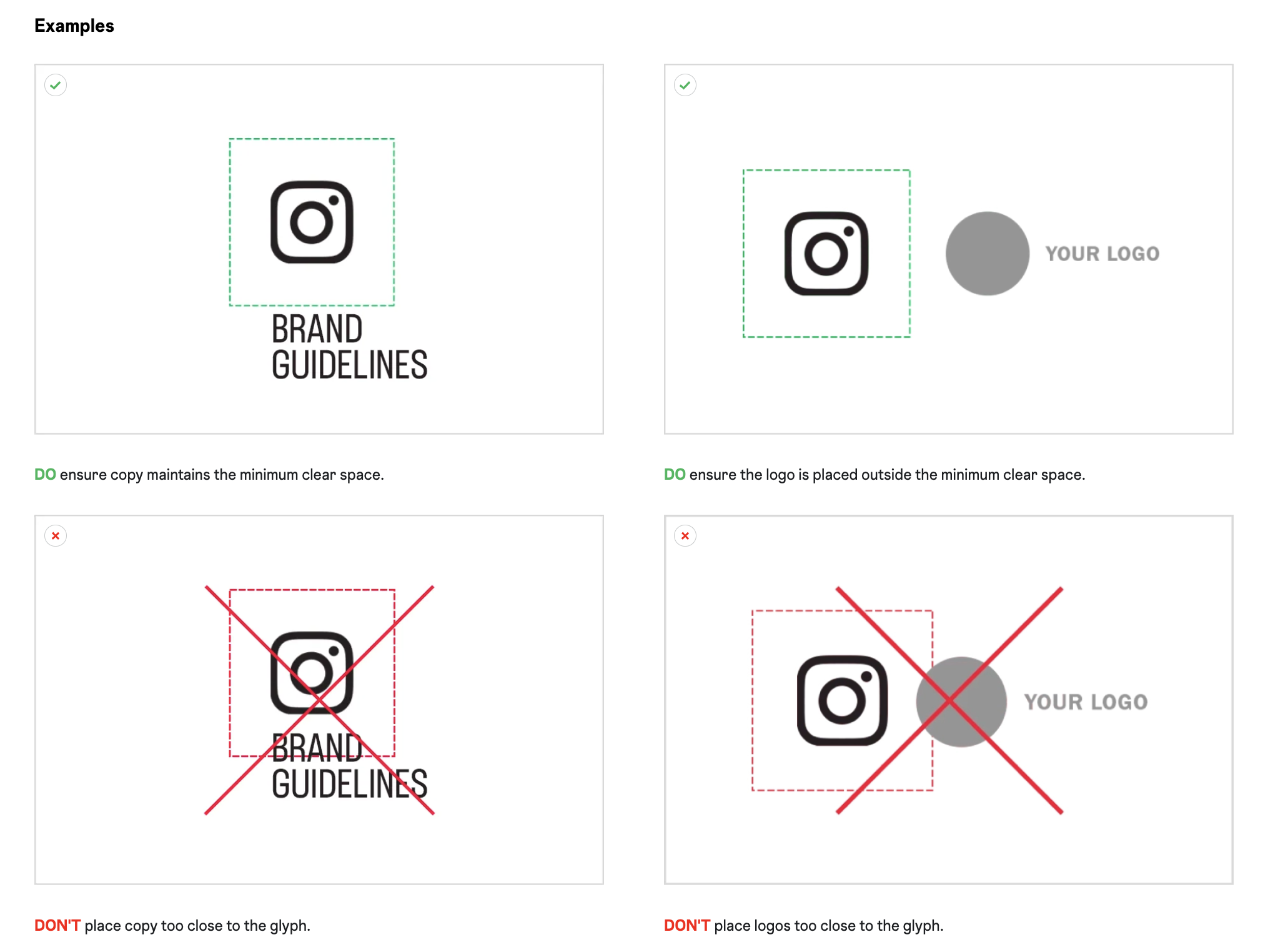
Source: a screenshot of Instagram logo do’s and don’ts via Meta.
Here are some common social media icon or logo style guides for your reference:
Social media platforms have gone through several branding iterations over the years as well. Take Facebook, which has revamped its logo with a darker blue shade and a customized typeface for improved legibility.
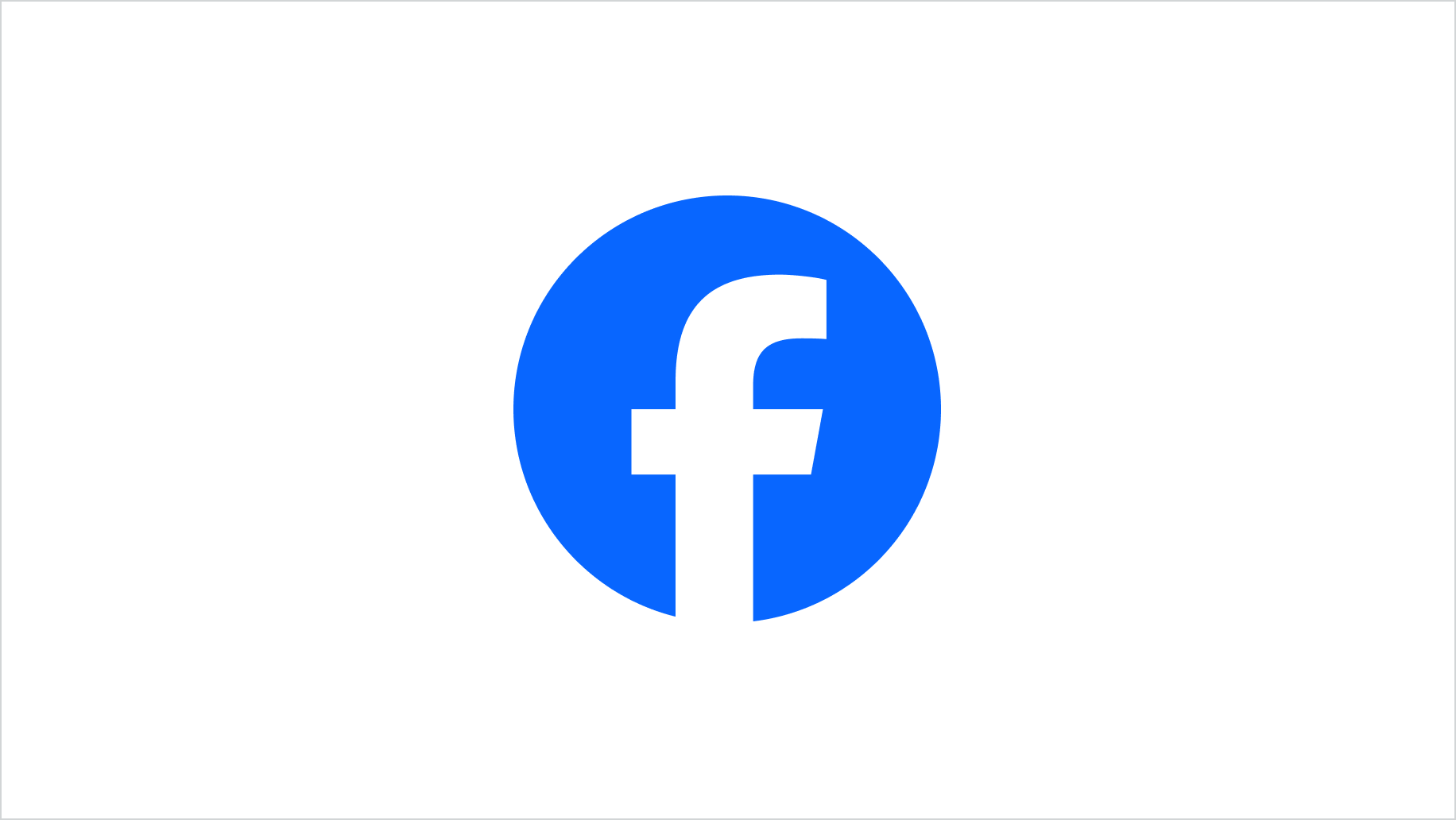
Source: Logo refresh via Facebook
Often, the social media icon will differ from the official logo (usually, the icon is much more simplified), so be aware that the style guide rules will likewise differ for logo usage vs icon usage. Be on the lookout for an icon-specific section in any brand style guide you’re researching.
Step 3: Figure out the best placement of social media icons
So, how should you display or show social media icons on your business cards?
While you want your social media icons to be easily visible, it is crucial to balance your design elements to make your business card visually appealing. Consider the visual hierarchy or prioritizing certain information like your brand logo, name and job title by making them appear larger. In terms of hierarchy, social media shares priority with contact details like email address, phone number and website, though designers will often use spacing to separate the social media tags for emphasis.
In The Poke Story example pictured below, the designer has balanced the contact information on the right side of the business card. Even as the designer clearly separates the social media handles, all of the contact details are marked with blue icons, making it easier to identify them as a group.
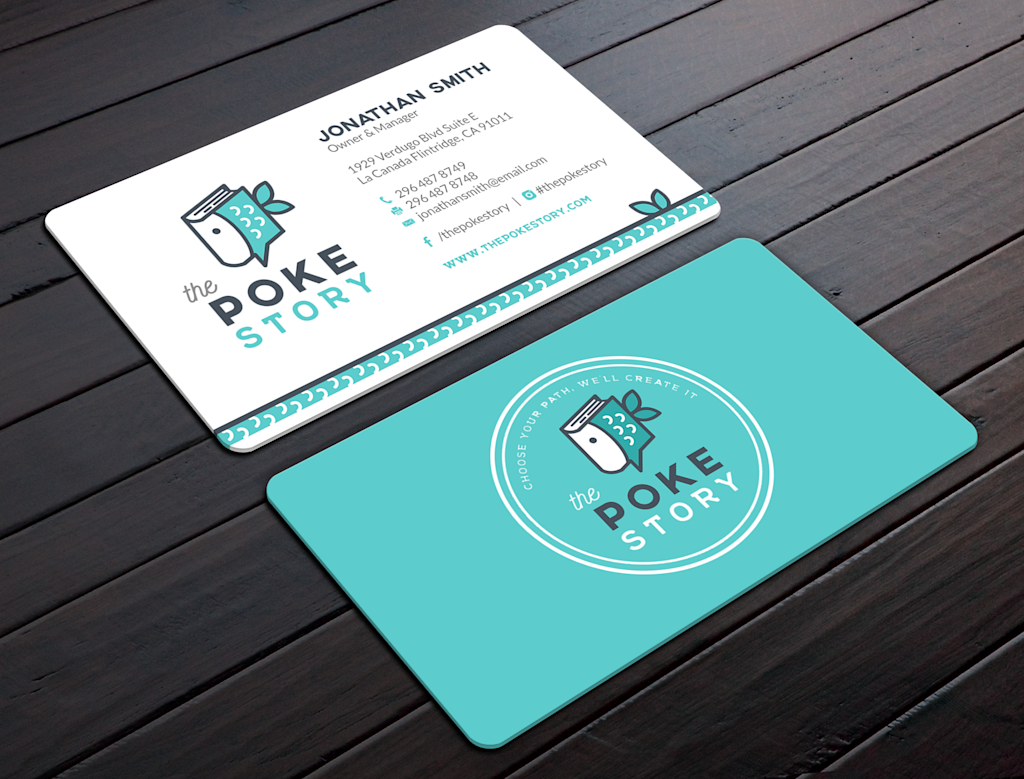
Source: business card design by Rose ❋ via 99designs by Vista.
Depending on your design and the information on your business card, you can display the social media details on the front or back. The advantage of adding social media handles to the back of your business card is that (again) this creates emphasis by giving the icons their own designated space—if social media is more primary contact for your business.
When adding your social media handles to your business card, make sure the text is large enough to read. Although we recommend a minimum of 8pt font, always print a sample business card to double check for legibility before putting it in full order.
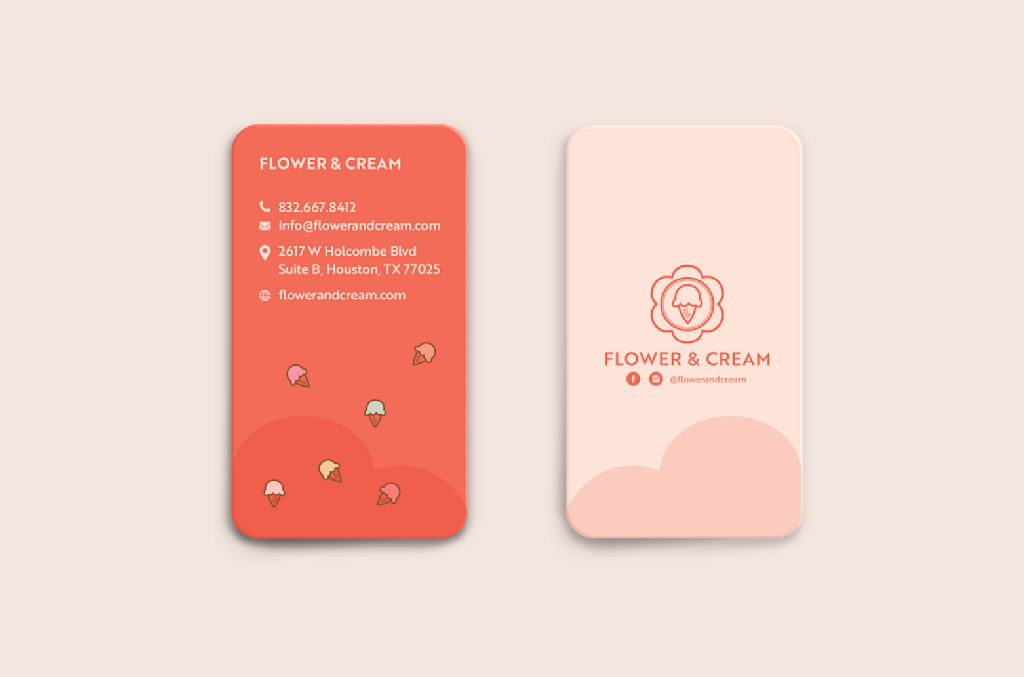
Source: business card design by Jecakp via 99designs by Vista.
Alternatively, you can opt for a simple QR code that links to a social media reference landing page like Linktree. If you have a ton of active social media accounts, an external website that organizes those links in one place will keep your business card design from being too cluttered.
The best way to learn different techniques for displaying social media icons is to take inspiration from some business card examples.
Step 4: Add a call-to-action (optional)
A study done by Sprout Social shows that nine out of 10 consumers surveyed in the US and the UK made purchases from brands they follow on social media. So, you might want to give your customers a little nudge to do so with a call-to-action on your business cards like, ‘Follow us’, ‘Talk to us for more info’ or ‘Connect with us’.
Or you can add little messages that give clients a reason to find you on social media—for special offers, helpful content or updates on your latest products and services.
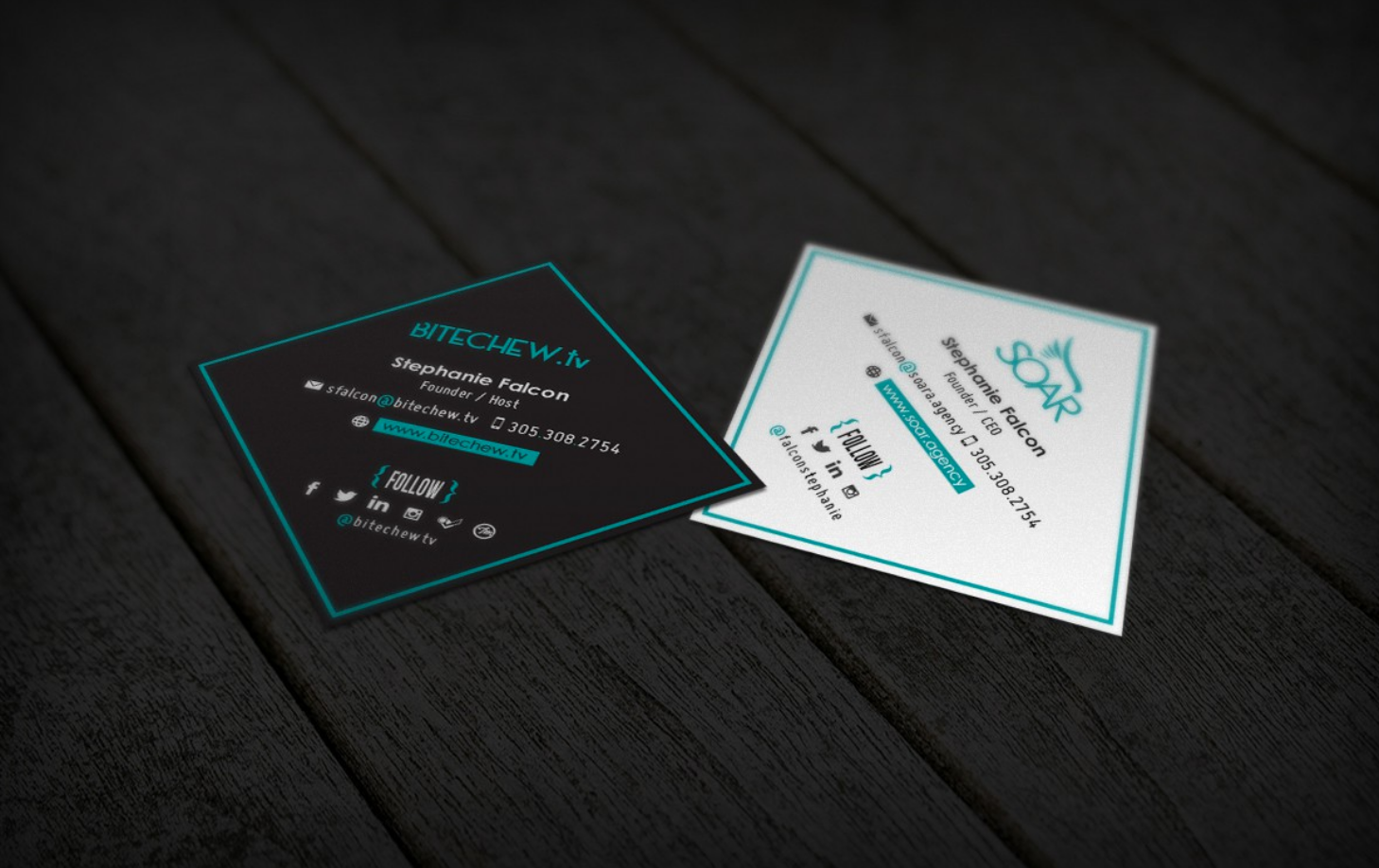
Source: business card design by ivdsgn via 99designs by Vista.
How social media can help your business
So we’ve gone over the “how” of adding social media icons on business cards—but maybe you’re wondering about the “why.” Whether you’re a small business owner wishing to be noticed or a large corporation maintaining its presence in the market, social media can extend your reach, build relationships with customers and more.
It can make your brand memorable
Building a lasting impression is crucial to businesses yet not so easy to achieve. With so many options at people’s fingertips, you want to be the brand people think of first. Luckily, social media can do that.
By creating and sharing engaging content that resonates with your customers, your business is more likely to be remembered. Think behind-the-scenes content that gives a glimpse of your team, how your brand started or how your products are made. You can also upload user-generated content or posts made by your followers related to your brand to express gratitude. It’s an organic way to showcase everyday product users, too. These efforts humanize your business as it allows you to connect with your customers on a more personal level.

Source: Paint brand Edward Bulmer Paint introduces its founder via Instagram
Tips, life hacks and tutorials related to your products or services are also great ways to build your reputation, increase brand loyalty and keep customer satisfaction high. Over time, you can even become a brand authority or the go-to source for industry-related information.
It can increase your following and customer base
A highly accessible brand not only builds strong customer connections but also expands possibilities for growth. Through social media, you can easily reach millions of users. And with strategic social media marketing, you can strengthen your presence to increase your following and convert them to buyers.
While it can be tempting to want to be visible everywhere, it pays to be on platforms where your target segment is most active. Your choice of socials also depends on what type of content your brand mostly shares. For example, if your business is in travel, fashion, or beauty that leverages visual content, then Instagram may be one of your best bets.
It enriches customer relationships
Speaking of increasing accessibility, social media allows for real-time conversations with your customers, too. They can ask questions about your brand, provide feedback and raise concerns about your products and services. On your side, as a business owner, social media becomes the gateway to better customer support as you can instantly flag issues and offer convenient resolutions in a jiff! Finally, by monitoring social media conversations and feedback, you can gain nuggets of info to help create a positive, interactive and memorable brand experience, resulting in higher customer satisfaction.
It can easily create a buzz
Gone are the days when businesses relied solely on flyers, brochures and word of mouth to let people know about sales, special events and other happenings. While those things are still important, a single post on social media can help you spread the word even further and faster.
New merchandise? Show off some pictures on Instagram. Year-end clearance? Drop the news on Facebook. You can even host giveaways, online contests or AMAs (Ask Me Anything) to pique their curiosity and encourage engagement. And let’s not forget the power of influencers. By tapping on-brand influencers your customers resonate with, you can widen your reach by engaging with their followers, too.
Adding social media icons to business cards is simple and effective
We hope we were able to shed light on the importance of having social media business cards to boost your business. When done correctly, your business card can become a simple yet powerful tool to introduce your business, build connections and increase your market reach.
Ready to create your business cards?